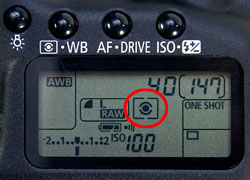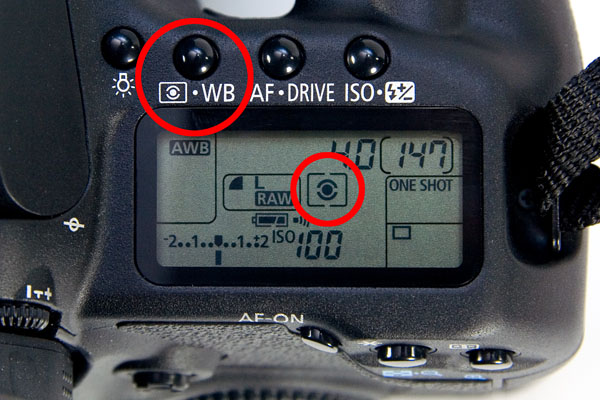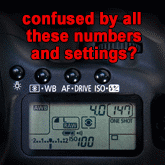posted Tuesday, 21 May 2013, 19:40 (+0800), by Martin
This is the eleventh article in a
series on "understanding your camera"
that I am writing as I teach camera basics and camera operation to my children.


The metering mode determines how your camera will measure the brightness of the scene being photographed to determine the exposure.
Modern DSLR cameras support a number of different metering modes, and it is important to understand how the different modes work, and when the different modes should be used.
This article describes how each of the metering modes works, and also provides some details on selecting which metering mode to use in different situations.
Below is a list of the metering modes supported by most modern DSLR cameras and mirrorless cameras, along with the icons used to indicate these metering modes. Not all cameras support all these modes, and some camera manufacturers use slightly different terminology for the modes.
The metering mode cannot be selected when the camera is in any of the basic modes (auto, portrait, landscape, macro, etc). In these modes, the camera will always use the evaluative metering mode.
You need to have the camera in one of the creative modes (program mode, aperture priority, shutter priority, manual mode) in order to be able to select the metering mode.

On Canon DSLR cameras, the metering mode is selected by pressing the "metering mode / white balance" button (circled in the photo above), then scrolling through the modes using the top dial.
The currently selected metering mode is displayed on the LCD screen (also circled in the photo above).
Other brands of DSLR cameras typically use a similar mechanism for selecting the metering mode, although some cameras have a dedicated selector for specifying the metering mode.
Refer to your camera manual for specific details for your camera.
Canon DSLR cameras configured to use evaluative metering will set the exposure for the photo when the shutter button is half-pressed. The metering will remain locked while the shutter button is held half-way down. With partial, spot and centre-weighted metering, the exposure is set at the time the photo is taken, not when the shutter button is half-pressed, unless auto-exposure lock is used.
Nikon DSLR cameras set the exposure when the photo is taken, unless auto-exposure lock is used, and Pentax DSLR cameras can be configured to enable or disable exposure lock with focus lock via a custom setting (AE-L with AF locked).
If you are one of those people who have never used a different metering mode, I would encourage you to try using some of the other metering modes supported by your camera. Taking control of how the camera determines the metering will help ensure the camera can determine the exposure required for a photo, especially in situations where the frame contains high contrast, or where a subject is rear-lit.
What metering modes do you use on your camera? Is your camera still set to the default metering mode? Have you never used any other metering mode? Or do you change metering modes, depending on the situation?

Metering the Scene

The metering mode determines how your camera will measure the brightness of the scene being photographed to determine the exposure.
Modern DSLR cameras support a number of different metering modes, and it is important to understand how the different modes work, and when the different modes should be used.
This article describes how each of the metering modes works, and also provides some details on selecting which metering mode to use in different situations.
Metering Modes
Below is a list of the metering modes supported by most modern DSLR cameras and mirrorless cameras, along with the icons used to indicate these metering modes. Not all cameras support all these modes, and some camera manufacturers use slightly different terminology for the modes.
|
Evaluative Metering / Matrix Metering / Multi-segment Metering
| |

|
How It Works:
Your camera will meter the entire frame to determine the exposure required.
To achieve this, the camera splits the frame into a number of sections, evaluates each section separately.
The exposure readings of the sections nearest to the active focus point are weighted more heavily
than other exposure readings from other sections, and the camera then analyses
the resulting exposures for each section to determine the over-all exposure for the scene.
When To Use It: This is a general-purpose metering mode, suited for most conditions, and is the default mode on most DSLR cameras. When full-auto mode or any basic (portrait, landscape, macro, etc) modes are selected, most (all?) DSLR cameras will revert to this metering mode. |
|
Spot Metering
| |

|
How It Works:
This mode will cause the camera to meter using a smaller portion of the frame,
typically 1.5-3.5%, depending on the camera model.
For most DSLR cameras, spot metering uses the centre of the frame.
With Canon, Sony and Pentax DSLR cameras, spot metering always uses a small portion of the frame at the centre (the Canon 1D series of DSLR cameras are the only exception). Nikon DSLR cameras behave a little differently, with spot metering using a small portion of the frame centred on the currently selected focus point. When To Use It: Spot metering is useful for metering on a specific part of a subject or scene, especially if the scene has a lot of contrast, with either bright or dark portions. |
|
Partial Metering
| |

|
How It Works:
The camera meters a small portion at the centre of the frame,
typically 5-10%, depending on the camera model.
When To Use It: Similar to spot metering, this mode can be useful when you want to meter on a specific part of the scene, but where the area being metered is larger. |
|
Centre-Weighted Average Metering
| |

|
How It Works:
This mode will use meter the entire frame, but will assign a greater weight to the metering from the centre
of the frame.
When To Use It: This is a general-purpose metering mode, useful when the scene being photographed is lit quite evenly, and the subject is in the centre of the frame. This mode is largely redundant, as evaluative metering provides better results in most conditions. |
Setting the Metering Mode
The metering mode cannot be selected when the camera is in any of the basic modes (auto, portrait, landscape, macro, etc). In these modes, the camera will always use the evaluative metering mode.
You need to have the camera in one of the creative modes (program mode, aperture priority, shutter priority, manual mode) in order to be able to select the metering mode.

metering mode button (top left) and currently selected metering mode (centre)
On Canon DSLR cameras, the metering mode is selected by pressing the "metering mode / white balance" button (circled in the photo above), then scrolling through the modes using the top dial.
The currently selected metering mode is displayed on the LCD screen (also circled in the photo above).
Other brands of DSLR cameras typically use a similar mechanism for selecting the metering mode, although some cameras have a dedicated selector for specifying the metering mode.
Refer to your camera manual for specific details for your camera.
Metering Modes Affect When a Camera Sets Exposure
Canon DSLR cameras configured to use evaluative metering will set the exposure for the photo when the shutter button is half-pressed. The metering will remain locked while the shutter button is held half-way down. With partial, spot and centre-weighted metering, the exposure is set at the time the photo is taken, not when the shutter button is half-pressed, unless auto-exposure lock is used.
Nikon DSLR cameras set the exposure when the photo is taken, unless auto-exposure lock is used, and Pentax DSLR cameras can be configured to enable or disable exposure lock with focus lock via a custom setting (AE-L with AF locked).
What About You?
If you are one of those people who have never used a different metering mode, I would encourage you to try using some of the other metering modes supported by your camera. Taking control of how the camera determines the metering will help ensure the camera can determine the exposure required for a photo, especially in situations where the frame contains high contrast, or where a subject is rear-lit.
What metering modes do you use on your camera? Is your camera still set to the default metering mode? Have you never used any other metering mode? Or do you change metering modes, depending on the situation?


